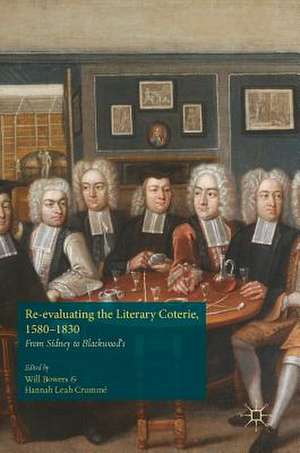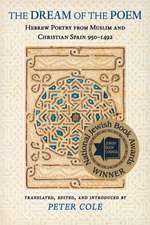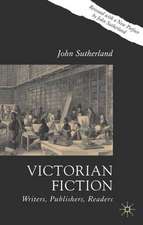Re-evaluating the Literary Coterie, 1580–1830: From Sidney to Blackwood's
Editat de Will Bowers, Hannah Leah Crumméen Limba Engleză Hardback – 5 dec 2016
With an Afterword by Helen Hackett
Preț: 727.97 lei
Preț vechi: 887.76 lei
-18% Nou
Puncte Express: 1092
Preț estimativ în valută:
139.30€ • 145.81$ • 115.94£
139.30€ • 145.81$ • 115.94£
Carte tipărită la comandă
Livrare economică 31 martie-14 aprilie
Preluare comenzi: 021 569.72.76
Specificații
ISBN-13: 9781137545527
ISBN-10: 1137545526
Pagini: 240
Ilustrații: XV, 241 p. 5 illus. in color.
Dimensiuni: 148 x 210 x 20 mm
Greutate: 0.45 kg
Ediția:1st ed. 2016
Editura: Palgrave Macmillan UK
Colecția Palgrave Macmillan
Locul publicării:London, United Kingdom
ISBN-10: 1137545526
Pagini: 240
Ilustrații: XV, 241 p. 5 illus. in color.
Dimensiuni: 148 x 210 x 20 mm
Greutate: 0.45 kg
Ediția:1st ed. 2016
Editura: Palgrave Macmillan UK
Colecția Palgrave Macmillan
Locul publicării:London, United Kingdom
Cuprins
Introduction; Will Bowers and Hannah Leah Crummé.- 1. Literary Coteries of Mary Sidney Herbert, Countess of Pembroke
and William Herbert, third Earl of Pembroke; Mary Ellen Lamb.- 2. The Circulation of Verse at the Inns of Court and in
London in Early Stuart England; Arthur Marotti.- 3. Maecenas and Oxford-Witts:Pedagogy and Flattery in Seventeenth-Century Oxford; Christopher Burlinson.- 4. ‘If I had known him, I would have loved him.’ Bloomsbury appropriations of the Scriblerian coterie; Abigail Williams and Peter Huhne.- 5. The Hillarian Circle: Scorpions, sexual politics and heterosocial coteries; Christine Gerrard.- 6. Edmund Spenser and Coterie Culture, 1774–1790; Hazel Wilkinson.- 7. Charles Lamb, Samuel Taylor Coleridge, and the forging of the Romantic literary coterie; Felicity James.- 8. The Many Rooms of Holland House; Will Bowers.- 9. Aggressive Intimacy: Mass Markets and the Blackwood’s Magazine Coterie; Robert Morrison.-
Afterword; Helen Hackett.- Bibliography.- Index.-
Recenzii
Notă biografică
Will Bowers is Junior Research Fellow in English at the University of Oxford, UK. His research interests include Romantic poetry; the idea of a cosmopolitan London; the trial of Queen Caroline; and English perceptions of Italy and Italians. He has published on these topics in international journals and is an assistant editor on the 'Longman Annotated English Poets' edition of The Poems of Shelley.
Hannah Leah Crummé is Head of Special Collections at Watzek Library, Lewis and Clark College, USA. Her research focuses on the political impact of the Sidney-Herbert-Dudley network. She has published broadly across her field and curated the exhibition ‘By me William Shakespeare’, which recently opened in Somerset House, London, UK.
Textul de pe ultima copertă
This book is about the literary and friendship networks that were active in Britain for a 250- year period. Patterns in the nature of literary social circles emerge: they may centre upon a location, like Christ Church, or a person, like Aaron Hill; they may suffer stress when private relationships become public knowledge, as Caroline Lamb’s Glenarvon shows; and they may model themselves on a preceding age, as the relationship between the Sidney circle and Lady Mary Wroth exemplifies. Despite these similarities, no two coteries are the same. The circles this volume examines even differ in their acceptance of their own status as a coterie: someone like Constance Fowler was certainly part of a strict familial coterie; the Scriberlians were a more informal set who were also members of other groups; and although Byron’s years of fame are regularly associated with Holland House, he often denied being of their party.
Caracteristici
With an Afterword by Helen Hackett Features contributions from well-established scholars in addition to early career researchers Spans four centuries Examines coteries involving literary figures such as Sidney, Pope, Swift and Byron














